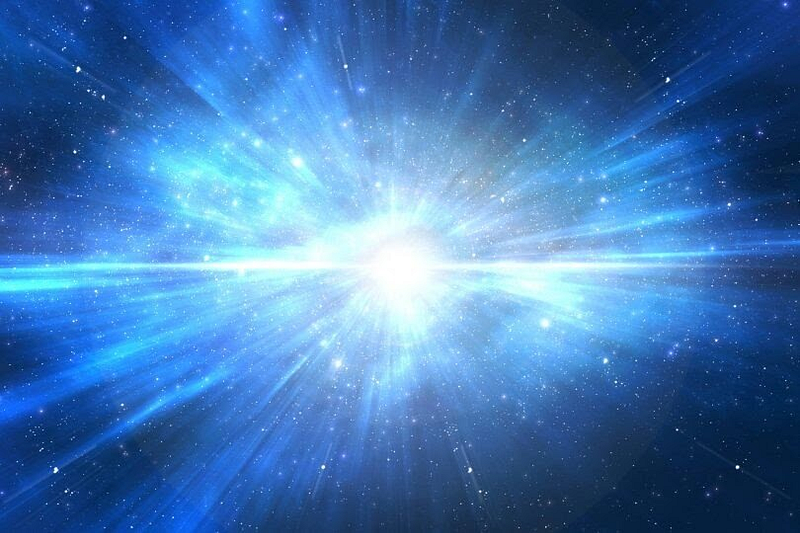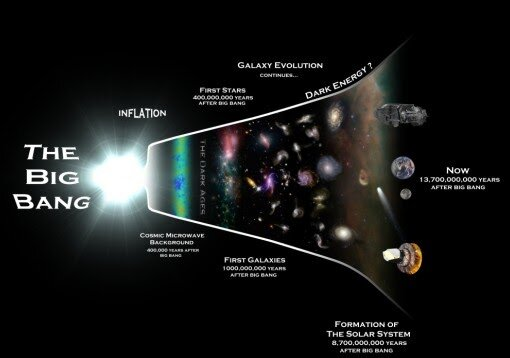A Comprehensive Look at the Birth of the Universe
Written on
Chapter 1: Understanding the Big Bang
The Big Bang theory serves as a framework for understanding the origin of our Universe. This event is estimated to have occurred approximately 13.798 billion years ago, marking the transition from an extraordinarily dense and hot state to a rapidly expanding cosmos. While the specifics of this initial phase remain elusive, scientists have uncovered various insights. This article delves into the critical moments following the Big Bang.

The Big Bang and the Planck Epoch
Around 13.798 billion years ago, all mass, energy, and space were condensed into a singular point, approximately a decillion times smaller than a period. This hot and dense singularity initiated what we recognize as the Big Bang. The initial phase, known as the "Planck Epoch," lasted from 0 to 10^-43 seconds and witnessed the unification of all fundamental forces. As this epoch concluded, gravity became distinct from other forces, and as time surpassed 10^-35 seconds, electromagnetic, weak, and strong nuclear forces emerged.
A Trillionth of a Second After the Big Bang
During this brief period, matter in the form of subatomic particles and radiation, including photons, remained in constant interaction. Even today, the Universe is akin to a turbulent mixture of quarks, gluons, photons, leptons, their antiparticles, and bosons, which facilitate particle interactions. Interestingly, physicists now classify these particles as elementary, indicating they are indivisible.

Some researchers propose that an asymmetry in particle numbers occurred early in the Universe's evolution, resulting in a slight excess of matter over antimatter—specifically, one extra matter particle for every billion antimatter particles. This minuscule discrepancy allowed for the existence of matter in our Universe, preventing complete annihilation with antimatter.
As the Universe continued to expand, temperatures dropped below a trillion Kelvins, reaching dimensions comparable to our Solar System.
A Millionth of a Second After the Big Bang
As the Universe cooled further, quarks began to combine, forming hadrons—particles that include protons and neutrons. This marked the beginning of the "hadron era."
One Second After the Birth of the Universe
At this point, the Universe expanded to several light years, and temperatures fell to about a billion Kelvins. Electrons and positrons continued to form in a balanced ratio, with electrons slightly outnumbering positrons, allowing the Universe to remain populated with electrons after their annihilation.
From One to One Hundred Seconds After the Birth of the Universe
In the subsequent seconds, the temperature of the Universe dropped to around a hundred million Kelvins. During this stage, protons began fusing with each other and neutrons, resulting in the formation of atomic nuclei. Helium constituted about 10% of these nuclei, along with traces of deuterium, tritium, lithium, and heavier elements, while the remaining protons formed hydrogen nuclei, which made up 90% of all nuclei in the Universe.

After several hundred thousand years, as the Universe cooled to around 3000 degrees, electrons began to attach to atomic nuclei, leading to the formation of atoms. This period initiated the "Dark Ages," characterized by a lack of light sources and lasting approximately 400 million years. During this time, gravity pulled matter into vast clusters, eventually resulting in the formation of galaxies. Following this era, the first stars ignited, illuminating the Universe and marking the beginning of a new cosmic chapter. Since then, the Universe has undergone changes, but no fundamental shifts have occurred.
In this video, "A Brief History of the Universe: Crash Course Astronomy #44," we explore the evolution of the cosmos, from the Big Bang to the present day.
The video titled "The Big Bang: A Brief Big History (H2)" provides a concise overview of the Big Bang theory and its implications for our understanding of the Universe.
If you want to see more articles about space, feel free to clap! Subscribe to our channel and share your questions, which I will address in upcoming articles.